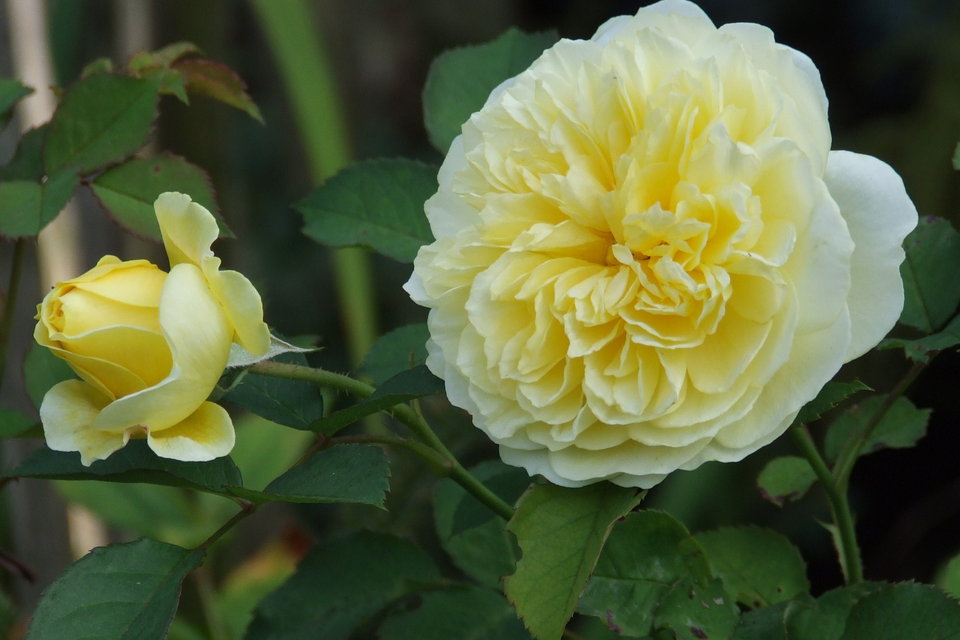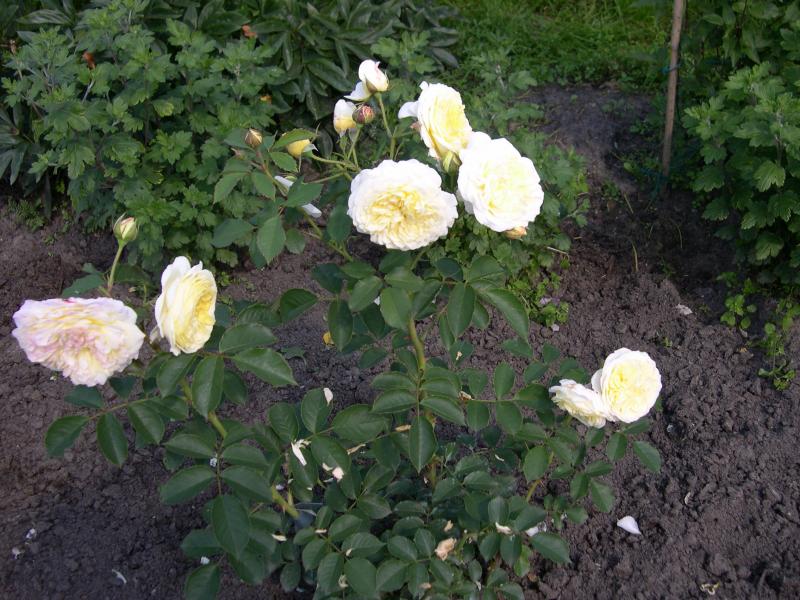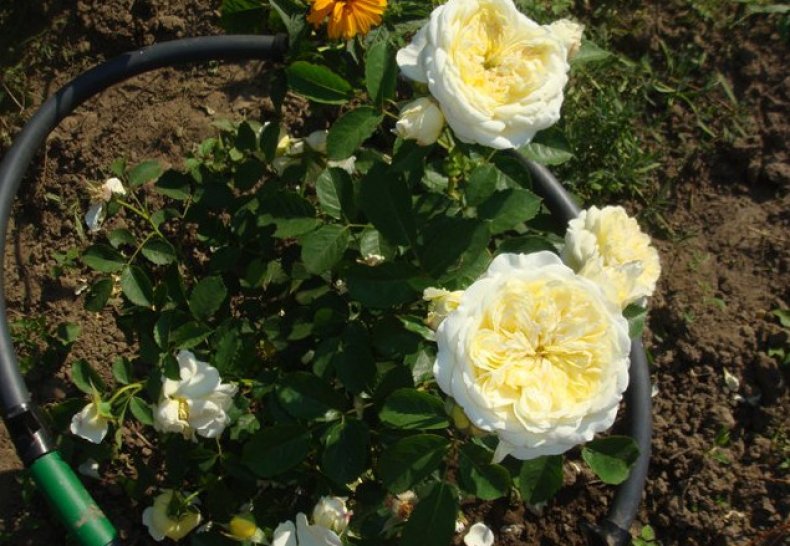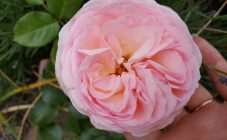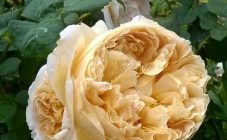Content:
The Pilgrim rose is one of the most beautiful yellow English roses. Most yellow varieties, due to their harsh, very bright color, can be difficult to place on the site. But with The Pilgrim, there are no such problems. Shrub rose ze Pilgrim D. Austin is distinguished by a soft yellow, delicate color, which goes well with other flowers in the garden.
General characteristics of the variety
Despite such an exquisite look and sophistication, this rose is distinguished by its endurance, active growth, and abundant flowering. The variety stands out among others in the form of its flowers, which are very similar to peonies, therefore this rose belongs to the peony group.
The breeding process for this variety was not easy. Breeding development was carried out by the company of David Austin (David Austin Roses). Hence the second name of the culture - "Ostinki" (from the word Ostin), and therefore sometimes the name of the breeder D. Austin is added to the name.
The variety was bred in 1991 as a result of crossing Yellow Button varieties with Graham Tomas. Pilgrim Rose turned out to be very beautiful, unusual, unique, thanks to which it won many awards at exhibitions.
Description and features of culture
The flowers are soft and silky to the touch and have a delicate golden color. A graceful rosette with a perfectly rounded shape and consists of numerous small petals. One flower can contain from 100 to 150 petals. On the inside, the petals are completely yellow, and on the outside, they are completely white. Erect shoots, dark green leaves with a shiny surface.
The flowering of the bush is very bright, abundant, emitting a pleasant scent that combines the aromas of myrrh and tea rose. When growing a Pilgrim with a support, the plant can reach a height of 3 meters. The flowering period of the culture continues until the onset of stable cold weather.
Growing and care
Landing
The best time for this is early or mid-autumn. In order for the “ostinks” to take root and not suffer from severe cold weather, it is recommended to plant them before the onset of frost. You can also root flowers in spring. Peony roses do well in any climatic conditions, but they prefer well-lit, sun-warmed areas.
As for the variety of soil, the Pilgrim rose prefers black soil. Loamy soil is also suitable for this rose variety. It is recommended to make the planting holes large - 70 cm deep and 50 cm wide. This is necessary so that the roots can grow and develop freely.
The soil for the rose should not be too wet, otherwise the plant may get sick. To prevent this, it is necessary to make a drainage system using sand and gravel. At the bottom of the planting pit, a layer of fertilizer is laid, consisting of manure, peat, sand and humus. Groundwater should run at a depth of over 1 meter. The acid-base balance should be in the region of 6.0-6.5.
- You can increase the missing level of acidity by adding peat or ash.
- If the level exceeds the permissible level, ash will help to lower the pH values.
Before rooting, the seedlings should be in the water for a while. When placed in the ground, the border of the stock should be deepened by 7-10 cm, otherwise then wild vegetation will begin to form.After rooting, the seedling of the Pilgrim rose is watered with plenty of water, the roots are straightened, and then covered with a substrate and simple earth. A small mound should form around the bush stem.
The landing site, as mentioned earlier, must be well lit. Since the plant does not like aggressive sunlight, it is worth avoiding southern areas that are highly scorched by the sun. It is also necessary to ensure good ventilation in the area where the Pilgrim rose is planted. Therefore, do not plant "ostinki" in the lowlands, where cold air accumulates and stagnates. Such unfavorable conditions can lead to flower diseases.
During the first days, the rose is watered abundantly. It takes up to 5 liters of water per day. After the seedling takes root, it should be watered much less often and only when the top (2-3 cm) layer of soil dries up. The procedure is carried out regularly once a week. Pour from 10 to 15 liters of water under each rose.
The first year after the rooting of the Pilgrim, the flower is not fed. For the first time, "Ostinks" are fertilized in the spring in the second year of the culture's life. Nitrogen-containing fertilizers stimulate proper root and shoot development.
During the formation of buds, the Pilgrim needs nitrogen-containing and phosphorus fertilizers, which can provide the plant with a bright long flowering.
In the summer season, "Ostinki" are fed with calcium and potassium. In autumn, potassium sulfate and double superphosphate solutions can be used. Mineral fertilizers alternate with organic ones. Mullein, chicken droppings and albumin are used as the latter. One bush consumes up to 4-5 liters of fertilizer. Before the procedure, the plant is watered, and after it the soil is loosened.
Care
Pruning is done in two steps:
- Remove weak and unnecessary branches.
- They begin to form roses.
Pruning allows for longer flowering. Experienced gardeners recommend cutting off the third part of the shoot, and then the bush will become wide and spreading. At the end of the event, a complex feeding is done.
The Pilgrim rose does not tolerate the cold, so the bush must be very well prepared for winter. At the same time, flowers that have withered should not be removed - it is better to let them come off on their own. From the moment of the onset of a stable cold snap, it is necessary to remove the remaining leaves and those shoots on which the buds have not matured.
When the air temperature drops to -10 degrees Celsius, the bush is covered with foil. Before this, hilling should be carried out. The shelter is removed in the spring, when the thermometer rises to 0 degrees.
Like other plants, Pilgrim is also susceptible to disease. The danger for him is:
- rust;
- viral mosaic;
- powdery mildew;
- gray rot;
- black spot.
To prevent these diseases, you should carefully monitor the amount of moisture and fertilizer in the soil. There should not be an excess or lack of them. It is necessary to prune old, dried, damaged or infected plant tissues in a timely manner. Also, thickening of the bushes should not be allowed. The distance between roses should be more than 50 cm.
Advantages and disadvantages of the variety
Among the positive qualities of the Pilgrim are:
- great appearance and, as a result, high decorative value of the rose;
- bright long flowering;
- the ability to grow and develop in any climate;
The disadvantages of the variety are:
- lack of frost resistance;
- exactingness in care and growing issues;
- susceptibility to disease.
Rose Pilgrim is a special variety that distinguishes among other representatives of the species with a delightful unique aroma, an unusual peony rosette shape and its non-standard double color. The Pilgrim is a rose that requires special care and a competent approach to planting and growing crops. The reward for the labors will not disappoint the owner - the "Ostinki" will delight for a very long time with a wonderful view and aroma.
